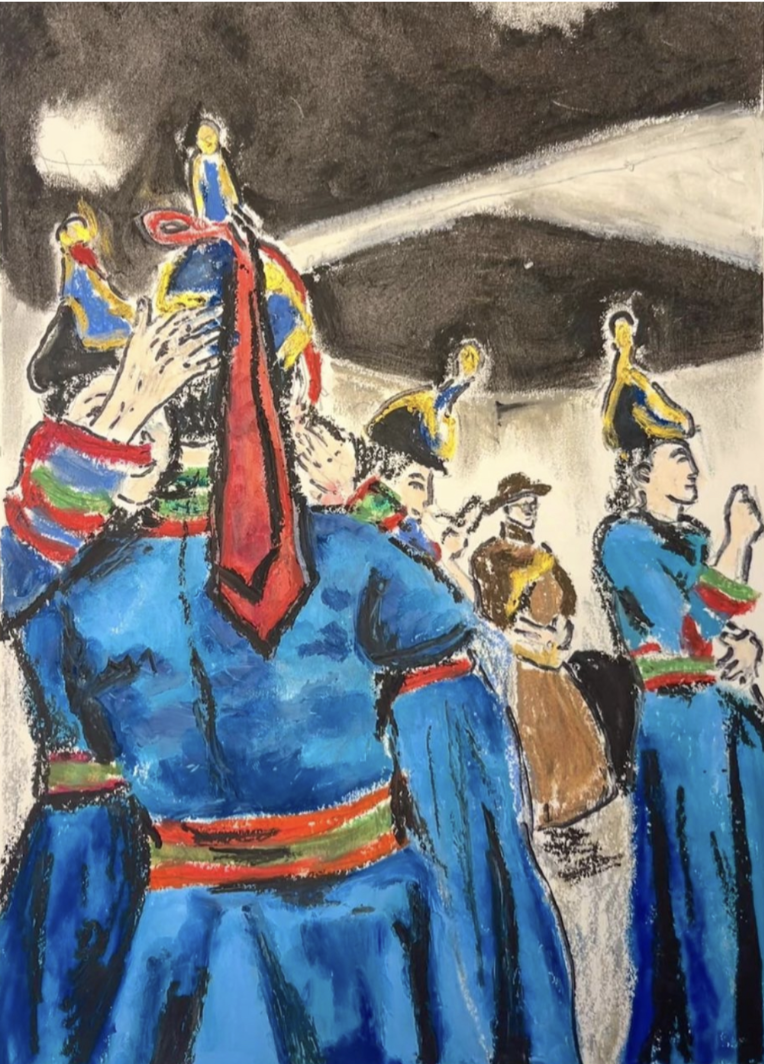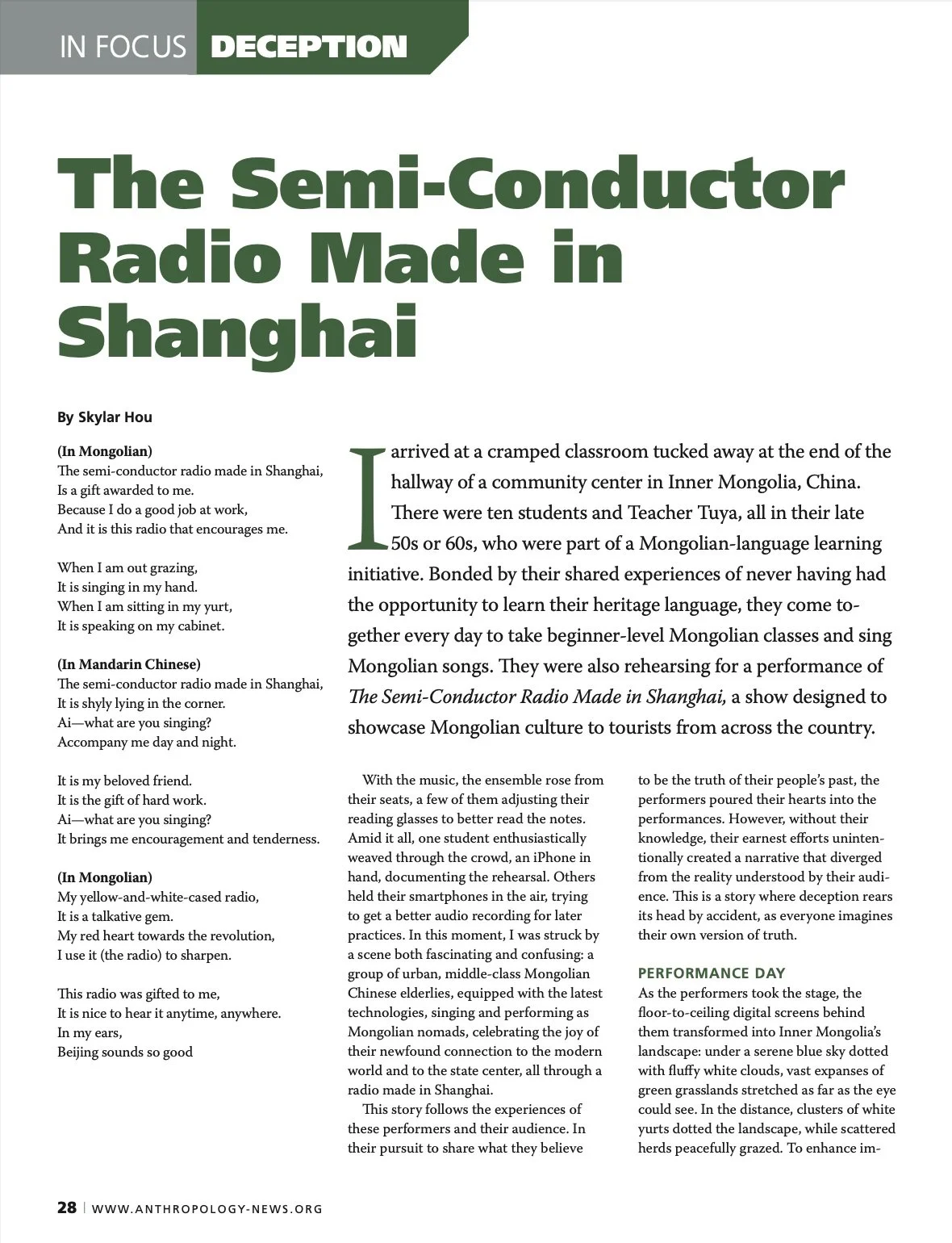anthropology of language survival, performance, and aging
On a scorching hot afternoon, in a cramped classroom tucked away at the end of a hallway in a community center in Inner Mongolia, China, twenty modestly-dressed elderly people come together to learn Traditional Mongolian. It was the language of their parents and grandparents, but one that they never had the chance to learn due to over seventy years of state-led assimilationist agenda promoting Mandarin Chinese. One might imagine that they strive towards fluency or hope their dedication ignites a broader revitalization for future generations. However, from over a year of ethnographic research, I found that learning Mongolian in their case has shifted in meaning from mastery of the language to its use in performance and as performative acts. These people focus their daily meetings on cultivating the feel of speaking Mongolian, through repeating basic phrases and singing Mongolian songs, without understanding most of the Mongolian they utter. What can we learn from a case where language survival does not seek fluency or revival in the strict sense, but is about learning to do things with it in public to ensure its presence endures without threatening the dominant language, Mandarin Chinese?
Dissertation Project (2022 - )
Echoes of a Language: Performing to Speak Mongolian in Inner Mongolia, China.
In this essay for Anthropology News, a public-interest magazine, I tell a fieldwork story about the performance of one of the most beloved songs, The Semiconductor Radio Made in Shanghai.
This story follows the experiences of these performers and their audience. In their pursuit to share what they believe to be the truth of their people’s past, the performers poured their hearts into the performances. However, without their knowledge, their earnest efforts unintentionally created a narrative that diverged from the reality understood by their audience. This is a story where deception rears its head by accident, as everyone imagines their own version of truth.
This StoryMap project is a part of the Sacred Rice 2025 mapping project to document threatened cultural heritage in and around Antananarivo, Madagascar. This StoryMap investigates extraction sites in Antananarivo. Through discussion around a series of satellite and field images, we see how the materials used in rapid infrastructure expansion may be sourced at the cost of significant community landscapes.


